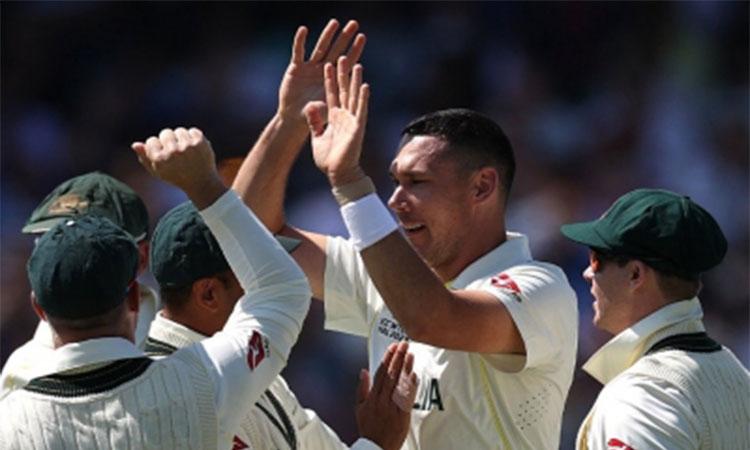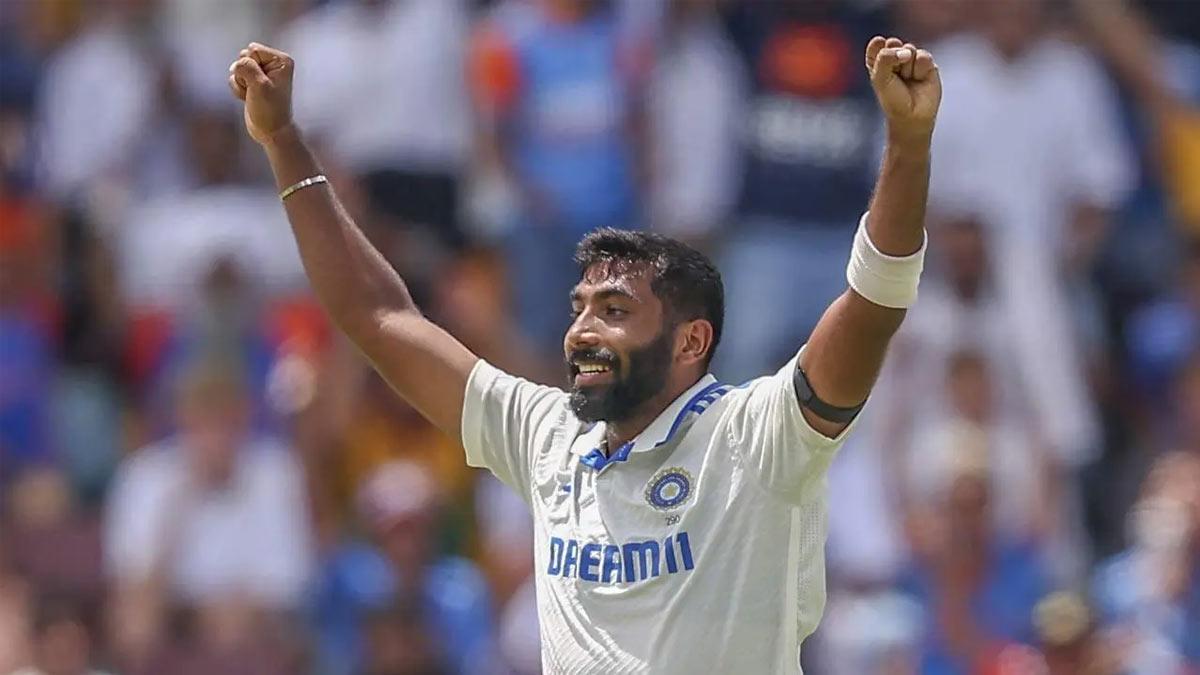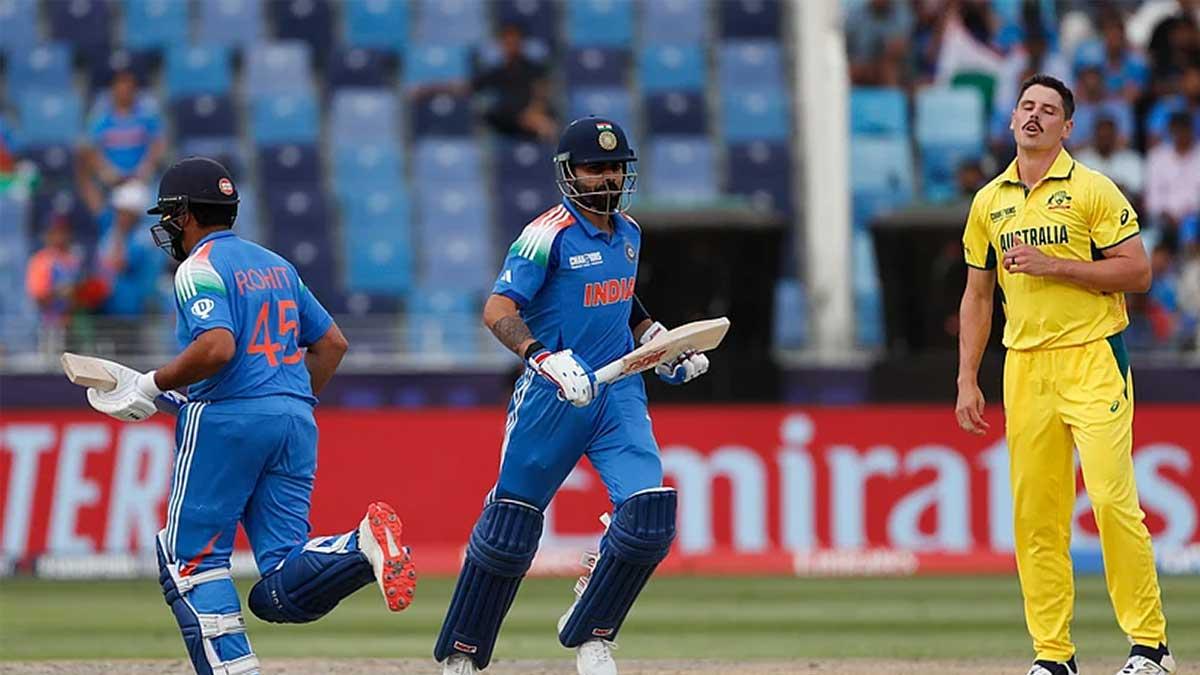While they theoretically live to fight another day, it is now a monumental task for India to save this most prestigious match, the final of the World Test Championship, against Australia.
On the second day of the Test, they compounded their error of not batting first after winning the toss with a tragic top order batting failure.
Openers Rohit Sharma and Shubhman Gill looked comfortable. But the former was caught plumb in front to an incoming ball as he often is. His opposite number Pat Cummins benefited. His in-form partner Gill, encountering Scott Boland for the first time, shouldered arms to a bowler who essentially swings the ball in.
Cheteshwar Pujara, who was until last month sharing the Sussex dressing room with Steve Smith - who completed a hundred on Thursday - did the same to Cameron Green.
Virat Kohli received a throat-high bouncer from an otherwise expensive Mitchell Starc, which, in his prime, he might have averting gloving as he did to second slip.
Ravindra Jadeja counter-attacked in Travis Head fashion, even hit a six off Boland, but in so doing, made Indian supporters miss the odd heart beat.
Eventually two runs short of his 50, he edged one with turn and bounce from Nathan Lyan - more testimony about the mistake of dropping Ravichandra Ashwin.
If you invite the opposition to bat after winning the toss and they end up with a total of 469, your gamble has unequivocally boomeranged.
However, by default, India were granted better batting conditions than the Australians. They made a hash of this opportunity, too.
An aspect the India failed to appreciate in playing four faster bowlers and fielding first was the fact that the International Cricket Council, under whose auspices and control this concluding match of the tournament is staged, are committed to doing everything in their powers to prepare a wicket that lasts.
A game that doesn't go the distance defeats their purpose of preserving the brand that's Test cricket. In other words, a pitch that is overloaded in either batsmen or bowlers' favour would militate against such an objective.
A sight of a grassy wicket before the toss on Wednesday psyched out the Indians. They were afraid to take first strike - which would have happened had Australia been lucky with the coin, since, they too misread the conditions.
India ought to have had the confidence to take on the Australian quicks in the first session, as their height would have generated greater bounce than their Indian counterparts, thereby at least largely negating lbws.
The Indians immediately - and incorrectly - concluded the surface was going to be a quick bowler's paradise; not taking into account the possibility that the turf had been retained to bind the track, so that the strip stayed the course.
On the second morning, the pitch, after it had been mowed by regulation, depicted less grass than on the first day. Ironically, it was in such conditions that India captured seven Australian wickets for 142 runs, as compared to three for 327 on the first day when circumstances were more helpful for the bowlers.
While there was reduced bounce off the pitch, Mohammed Shami sent down a number of deliveries which rather faded on their way to the wicket-keeper. The livelier Mohammed Siraj, in contrast, kept them thudding into the gloves.
He looked the likeliest among the Indian bowlers to take wickets; and his bag of four rightly reflected the state of play. His spoils included the wicket of centurion Head, gloving a hook to K.S. Bharat, who, in general, kept wickets impressively.
Incidentally, the fact that left-arm spinner Jadeja finished as the most economical of the Indian bowlers also re-emphasised India's mistake of not including Ashwin in the playing XI.
At draw of stumps, India were 151/5, with Rahane (29*) and Bharat (3*) holding fort, still trailing by 318 runs.
Also Read | Women's Junior Hockey Asia Cup: India storm into semis with 11-0 win over Chinese Taipei
Also Read | WTC Final: India stage fightback with four wickets as Australia reach 422/7 at lunch


















